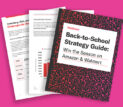Categories
Latest Posts
Tags
Advertising Amazon Amazon Advertising Amazon Experts Amazon Listing Optimization Amazon Marketplace Amazon News Amazon Prime Amazon Professional Sellers Summit Amazon Seller amazon sellers Amazon Seller Tips Amazon Seller Tools ASIN Brand Management Brands Buy Box Campaign Manager Conference COVID-19 downloadable Dynamic Pricing Ecommerce FBA FBM Holiday Season industry news Multi-Channel Fulfillment Optimize pay-per-click Pricing Algorithm Pricing Software Private Label Profits Repricing Repricing Software Revenue Sales Seller Seller-Fulfilled Prime Seller Performance Metrics SEO SKU Sponsored Products Ads Strategy
Get the latest insights right in your inbox

Amazon 1P vs. 3P: What Are the Differences?
What Is Amazon 1P (Vendor Central)?
A 1P relationship means Amazon acts as the retailer, and you operate as a wholesale supplier to Amazon. Unlike 3P sellers who sell directly to consumers via Amazon’s marketplace, 1P vendors are invited by Amazon to participate.
To sell to Amazon in a 1P capacity, you need to be invited by Amazon directly. Amazon then sends you a purchase order (PO) and you fulfill the PO and ship the product back to Amazon.
Ownership of the product then transitions to Amazon and the company controls how the products will be priced on the marketplace. Amazon also withholds the right to charge additional fees for advertising allowances, merchandising allowances, and chargebacks.
Every ASIN that is sold via Amazon 1P will have a “Ships from and sold by Amazon.com” clause on its product detail page. If you operate with a 1P model, instead of operating in Amazon Seller Central, you gain access to Vendor Central. Vendor Central is the portal used to facilitate business between Amazon and 1P vendors. You can use Amazon Vendor Central to check in on the status of POs, find out product information, and gain insights on merchandising, payment, advertising, and reporting.

Navigate the 1P vs. 3P Decision with Confidence
Leverage Feedvisor’s AI to optimize your performance , whether you decide on 1P, 3P or both.Benefits of 1P
- Receive bulk POs from Amazon according to an established cadence.
- Amazon’s merchandising team optimizes the product detail pages for these ASINs.
- You gain credibility as a trustworthy brand, as the products are sold directly by Amazon. Having that seal of approval may make consumers more enticed to make a purchase.
- You have a diverse array of advertising opportunities available.
- You pay a flat fee for participation instead of individual marketplace selling fees such as for fulfillment and referrals.
- It is a much more hands-off approach and requires limited above and beyond resources and operational oversight.
Disadvantages of 1P
- You lose control of your products’ pricing as Amazon dictates the prices for 1P inventory, which may even break MAP agreements.
- Your margins may be lower with wholesale prices.
- You can face chargebacks from Amazon if you have difficulty maintaining stock levels or fulfilling orders on time.
- You are wholly reliant on Amazon’s PO replenishment to maintain your presence in front of Amazon’s vast audience.
What Is Amazon 3P (Seller Central)?
With a 3P model, you are the retailer and you sell products directly to consumers via the Amazon marketplace.
Through Amazon Seller Central, Amazon’s portal for sellers and brands to sell products directly to consumers, you can create and publish product detail pages, check in on the status of orders, monitor your inventory levels, and more.
If you choose Amazon’s 3P model, you also maintain control of your products and your pricing. You decide if you are going to fulfill your products through Fulfillment by Amazon (FBA), Fulfillment by Merchant (FBM), or Seller Fulfilled Prime (SFP). If you choose FBA, Amazon takes care of picking, packing, shipping, and returns.
Amazon Seller Central Benefits:
- You have pricing authority and maintain control of your retail prices. This can enable you to price in real time against your competitors. You can also experience pricing consistency and price structure rationalization across your branded items, which can lead to increased profits and more consistent pricing across other retailers who utilize Amazon to help set their benchmark pricing.
- You can receive greater control over your brand, as you have more diverse options with regard to your catalog, inventory, product information, and brand presence. Specifically, you have more hands-on capabilities for protection through the Brand Registry.
- Control over your listings, promotions, and the number of units you want to sell grants you more product launch capabilities and ways to incentivize conversions to accelerate the sales velocity of new products.
- You have the flexibility to update your product detail page content, whereas wholesale vendors need to have copy and images approved by Amazon’s internal team members.
- You can generate retail margins instead of lower, wholesale margins.

Make the Right Choice for Your Business
Explore How Feedvisor’s AI Solutions Can Enhance Your 1P or 3P Selling Strategy.
Disadvantages of 3P
- A significant amount of bandwidth is required, regardless of it you utilize an FBA or FBM fulfillment model.
- The onus is on you for on-page listing creation and optimization as well as running advertising campaigns or promotions.
- You are subject to marketplace fees such as variable closing fees, referral fees, and fulfillment and shipping fees.
- 3P brands do not have the benefit of Amazon’s 100% rating they receive via Vendor Central, placing much more emphasis on the importance of brand reputation management.
Final Thoughts
In today’s ever-evolving Amazon ecosystem, you need to be able to remain agile and provide ongoing value to high-quality prospects and existing customers. While both selling models offer their own unique advantages, you should evaluate which makes the most sense for your business and consider your size, the level of control and involvement you want, your existing fulfillment method(s), your annual budget, and specific business objectives.


